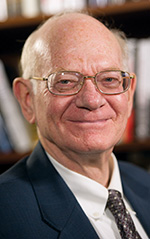Intervention: Unlearned Lessons, or the Gripes of a Professional
The State Department’s failure to effectively staff and run interventions requiring close civil-military cooperation in the field has a long history. Four critical lessons can be drawn from the post-9/11 experience.
BY RONALD E. NEUMANN
Iraq and Afghanistan were the latest in a 170-year history of American and State Department failure to figure out how to staff and run State’s part of military interventions. For the curious, I date State’s failure from 1848, when the department could not fill the U.S. Army’s request to send diplomats to help the Army manage civil affairs in conquered Mexican territory. Providing diplomatic personnel remained a problem in the latter half of the 20th century when every administration since President Harry Truman’s had foreign interventions that required diplomatic assistance. Nadia Schadlow has told much of this story in her book, War and the Art of Governance: Consolidating Combat Success into Political Victory (Georgetown University Press, 2017).
The staffing problem is an example of the persistent unwillingness to learn from our own past. I have lived some of the latest chapters of this story while serving in Iraq and Afghanistan. The difficulties in staffing interventions are many, but the underlying issue is that every intervention has been treated as a unique occurrence, often better forgotten than studied. Yet with more than 70 years of repeated military interventions requiring close civil-military operations in the field since the close of World War II, it is plainly unreasonable to assume that “never again” is a sufficient response.
The literature on stabilization is now extensive. It is not my purpose to try to summarize it all in a short article. Rather, I would like to reflect on a few large lessons that seem to me critical, drawn primarily from the post-9/11 years but reaching back also to my first experience of war in Vietnam and fairly extensive reading and study over the half-century that I have lived with, watched and sometimes tried to grapple with these issues.
Out of many lessons worth discussing, four stand out to me. One is the lack of tours of duty sufficient to master problems. Second is the confusion of policy with implementation. Third is the intellectual arrogance that Americans bring to critical policymaking. And fourth is the need for the State Department to find a dependable mechanism for surging staff in a crisis.
Tour Lengths: Undermining Effectiveness
The problems of tour lengths bedeviled both the military and the civilians in Iraq and Afghanistan. I arrived in Afghanistan in the summer of 2005. Within months, most of the U.S. Embassy Kabul staff had turned over: It was the equivalent of an institutional frontal lobotomy that was repeated yearly. That this was scarcely a new problem is illustrated by the scathing comment attributed to John Paul Vann, the USAID deputy for Civil Operations and Revolutionary Development Support (CORDS) in Vietnam: that we didn’t have 12 years’ experience, we had one year’s experience 12 times.
Some people do extend or return for additional tours, but the overall result of our practice is that few are knowledgeable or effective until well into their tours, by which time they are starting to think about an onward assignment. In UN Peacekeeping in Civil Wars (Cambridge University Press, 2012), Professor Lise Morjé Howard identifies the lessons that made for effective United Nations missions. One of her fundamental points is the need to develop a “learning culture”—a deep understanding of the political and social factors that need to be taken into account to make progress in complex interventions. Developing such a learning culture takes time. It is not compatible with the rapid replacement of staff. The few who do develop deep knowledge find themselves repeatedly fighting uphill battles to explain, particularly to Washington, how what they have learned needs to be considered in the formulation of new policies.
All too often, our reaction to failure is to throw out the policy without studying whether the problem lies there, or in implementation.
This problem is exacerbated by the difficulty of using failure as a basis for learning. In the United States, some 30 percent of startups fail within two years, and the rate is higher in the first year. In business, there is a rich body of study about why businesses fail and what can be learned from failure. But in our bureaucratic culture, failure is usually condemned, and failed projects are abandoned rather than studied to learn how to improve. The fear of failure and the resulting criticism, especially from Congress, leads particularly to two unfortunate results.
One is the adoption of extensive provisions for design and oversight to try to prevent failure, which in turn make it slow and difficult to experiment. Yet when we plunge into chaotic situations, as we did in Afghanistan and Iraq, there is little time to sit back and study issues before making decisions. Something must be done. Decisions must be made, and it is inevitable that some of the decisions will turn out poorly. The need is often for rapid experimentation and adjustment as lessons are learned; but that is not the way we operate. Second, the fear of criticism creates a bureaucratic reflex to defend projects and policies rather than to identify problems and make adjustments.
Confusing Policy with Implementation
These problems are reinforced by our propensity to confuse policy with implementation. Of course, sometimes policy does need changing. But often the policy isn’t the problem; it’s how we’re trying to implement it. Consider a hypothetical example. One could have a policy of using local tribesmen to secure roads. One could pick good leaders, reinforce them when attacked, and the result would be more secure roads and better trust between the tribal leaders and the government that supports them. Or one could find that the leaders were corrupt, money was stolen, and arms were used to repress rivals. Little security would be achieved, and the result would be failure. Yet the policy was the same.
All too often, however, our reaction to failure is to throw out the policy without studying whether the problem lies there, or in implementation. The result is a great deal of wasted time and little learning. One real-world example comes from the late Ambassador Richard Holbrooke’s decision to redo the justice program in Afghanistan. Without a doubt, the program had problems. Holbrooke’s answer was to stop the program cold so that it could be redesigned. The executing contractor demobilized, let go of staff, got rid of equipment and gave up office space.
It took about a year until USAID, after several efforts, got Holbrooke to approve a new concept and was able to rebid new contracts, one of which was won by the same contractor who had previously demobilized. During that year, nothing was accomplished. I believe that focusing on and fixing specific problems would have been far more effective than the stop-andstart process we followed. This is but a micro example of the cost of not understanding that the hard work is often in policy execution.
Sometimes policy does need to change. Getting this right is definitely hindered by an intellectual arrogance that designs foreign policy with no regard for foreigners. The result is a policy that cannot be executed successfully. Two examples across time illustrate the point. The first is from Vietnam, where one U.S. policy decision after another failed because of the inability to understand the local conditions. Speaking of one set of recommendations to Vietnamese President Ngo Dinh Diem, William Colby, a CIA official who spent 15 years involved with Vietnam, wrote: “We defined the necessary psychological shock in terms totally counter to Diem’s personality and the realities of the Vietnamese power structure and society.”
As Colby ruefully noted: “The conviction [was] widespread among the Americans that the failures of the various American formulas for success in Vietnam could be due only to the unwillingness or inability of the Vietnamese to perceive their validity— indeed, their brilliance—and then apply them as indicated.”
Intellectual Arrogance
Fifty years later, a similar disregard for understanding a foreign leader was evident in one element of President Barack Obama’s decision for how America would manage the Afghan war. One of the goals of the military surge decided on in 2009 was to stabilize important areas of Afghanistan. Washington’s combination of arrogance and ignorance jumped out at me from the strategy memo, attributed to President Obama himself, addressing how to strengthen subnational governance and counter corruption. In considering how to accomplish this with the government of Afghan President Hamid Karzai, the memo says the work will be done “working with Karzai where we can, working around him when we must.”
This approach was absurdly unrealistic, but it was often followed in the field. Visiting military teams scattered about Afghanistan in 2010, I frequently found Americans depicting the Kabul government as irrelevant to their operations. They had the money and the power in the field, and they would establish the policies they thought best. In many conversations, I tried to point out that this would not work because President Karzai had the ultimate power to hire and fire provincial officials. He would use that power when he felt the foreigners were going too far in undermining him.
It is the realistic perception of how to work with foreigners that is one of the strongest attributes of good diplomats, if our leaders will only make use of it.
Further, Karzai was engaged in a complicated game of political maneuvering to keep various competing Afghan political leaders and tribes under his control and to prevent others from becoming too strong. A local governor might be incredibly corrupt, inefficient or both; but if he was in place for a political purpose Karzai deemed essential, Karzai would retain that official. In this case, as in so many others, Kabul politics trumped policies made in Washington. Today, little remains from an incredible amount of work by military and civilian teams in the districts of Afghanistan.
Clearly, some policymakers have avoided the tendency to conceptualize policy without regard to the ground reality. Former Secretary of State James Baker was noteworthy for his ability to listen to others closely enough to understand how to close a deal. And it is the realistic perception of how to work with foreigners that is one of the strongest attributes of good diplomats, if our leaders will only make use of it.
A Mechanism for Surging Staff
Of the lessons unlearned despite repeated examples, the most glaring involves the State Department’s inability to surge staff, the failure with which this essay began. America’s diplomats are fully deployed. There is no reserve, nor even an excess over positions to allow for much long-term training. Then, when emergencies arise that need large increases in staff in the field, State will have to augment its personnel.
This problem has come up over and over. With the possible exception of President Donald Trump, who added military personnel to existing interventions but didn’t start a new one, every administration since Truman’s has undertaken foreign interventions. The usual conclusion is that we won’t do it again, so we don’t need to learn anything from the experience or prepare for the next one—and then we do it again.
Even in the overlapping Afghanistan and Iraq wars few lessons were imported from one theater to another. A single example is the history of provincial reconstruction teams (PRTs). Despite these having begun in Afghanistan several years before PRTs were initially fielded in Iraq, virtually no effort was made to import lessons learned from one war to the other. The initial problems of staffing, organization and support in Iraq were generally treated as new problems with new efforts at solution uninformed by reflection on what had worked or not worked in Afghanistan.
When the Afghan and Iraq staffing surges ended, there was no effort to study either the problems or successes of the efforts to field large numbers of civilians. The so-called 3161 mechanism (named after the section of law that provided the hiring authority) produced some very gifted and talented officers, and some who had to be sent back as unfit. The length of time needed to hire staff varied widely, with some moving quickly to deployment and others waiting months to be hired. There is a certain amount of legend about the causes of problems, but no systematic study has been done to identify ways to improve the process should the need arise again.
State’s one major effort to provide a contingency mechanism, the creation of the Coordinator for Reconstruction and Stabilization (S/CRS), now transformed into the Bureau of Conflict and Stabilization Operations, has gone through repeated changes of mission and organization without settling on clear goals. The reasons for this are many and outside the focus of this article, but the bottom line is that State still lacks a clear organizational model for how to staff interventions.
The two decades since 9/11 have brought many changes in the world and in the practice of diplomacy. We will manage the challenges of the changes better if we study and learn from the past. Considering the examples above, we have some way to go.
Read More...
- “The Myth of a Responsible Withdrawal From Afghanistan,” Laurel Miller, Foreign Affairs, January 22, 2021
- “Characteristics of Successful U.S. Military Interventions,” by Jennifer Kavanagh et al, RAND, 2019
- “Working to Strengthen U.S. Diplomacy,” interview with Amb. Neumann, FSJ, December 2018




